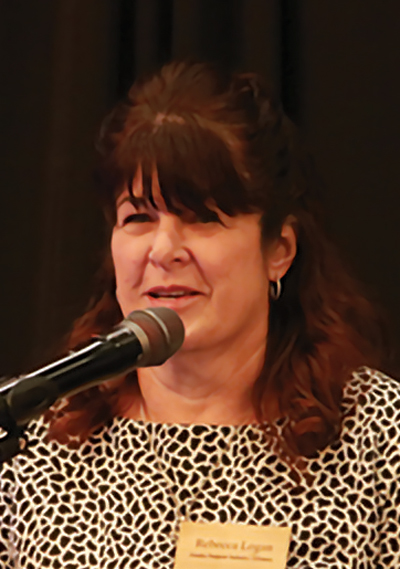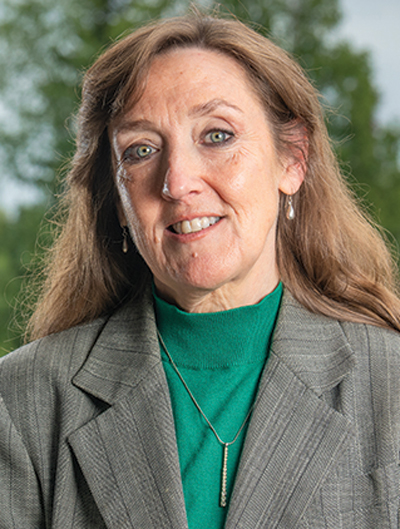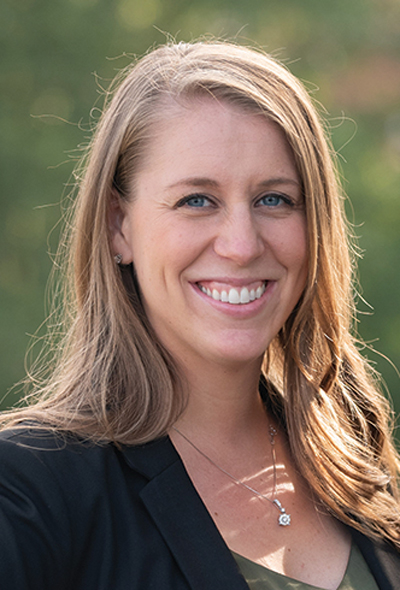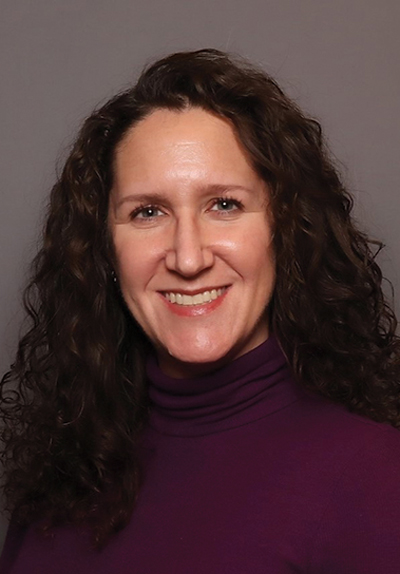tudents returning to classes in the Anchorage School District (ASD) are witnessing massive changes this fall. Start times are changing, opening elementary schools at 8 a.m. while high schoolers sleep an extra hour and arrive at 8:45. Middle schools run from 9:30 a.m. to 4 p.m., and this year all 6th graders are attending alongside 7th and 8th.
While families adjust to this shakeup in their routines, a third change holds promise for the business community. To enhance the quality and quantity of job applicants, ASD is rolling out Academies of Anchorage (AoA), a model for career readiness.
The graduating class of 2028, this year’s 9th graders, enter the program by taking a Career Exploration class. As sophomores next year, they will pick a career track offered at a particular high school and develop those skills. If their neighborhood high school doesn’t teach their preferred track, ASD plans to pay to transport them.
The AoA model builds on ASD’s existing career and technical education (CTE) programs. About half of middle and high school students are involved in CTE, offered in select clusters at certain schools (e.g., construction at Bartlett, East, Service, or West High; transportation at Dimond or Eagle River; et cetera) or comprehensively at King Tech. Alaska Middle College School, co-located at King Tech, gives high school students access to college-level degree or certificate courses.
AoA is meant to extend the CTE programs’ reach and impact.
Around 2017, ASD was attempting to address declines in student participation and graduation rates. It had tried several approaches, but none gained traction, and the effort stalled.
“The 2018 earthquake put a pause on initiatives,” Bryantt says. And then, “COVID-19 threw a wrench into the mix—but also unlocked a lot of opportunities in the rationale for our pursuit of Academies today.” The Anchorage School Board established ten-year goals for reading, math, and college, career, and life readiness (CCLR).
When Bryantt interviewed to be the ASD superintendent in 2022, school board members asked how he would measure CCLR goals. His answer? High schools should implement an academic model that correlates with local values and challenges. The school board liked his idea, so when he was hired, he started determining what direction to go.

James Evans | UAA
And not just in Texas. In Alaska, learning engagement and completion—both in secondary and postsecondary classrooms—is dwindling. One in three students who attend ASD high schools leave Alaska by the age of 26. And nearly all employers face hiring shortages and supply-line understaffing.
As the workforce evolves, so must learning institutions.
Thus, Bryantt says, “By focusing on connecting ASD students to the workforce, I realized ASD could elevate career and technical courses, which equalizes the playing field for our graduates.”
Whether a student is college or workforce-bound, AoA aims to set them up for success. Bryantt says part of that preparation requires awakening students’ interests and offering career paths.
Career and technical courses can result in certifications and licenses that lead ASD graduates to living-wage jobs immediately after earning high school diplomas. They also enable students to receive dual credit for secondary and college courses.

The Alliance
“By 2030, 72 percent of US jobs will require postsecondary attainments,” says Bryantt. Currently, he notes, only 40 percent of Alaskan high school graduates attend college, and about 25 percent earn a bachelor’s degree. “There’s a lot of work to be done.”
Alaska’s percentages align with national trends. The impacts, however, are amplified because hiring people from Outside poses difficulties.
“Our members are facing significant worker shortages,” says Rebecca Logan, CEO of The Alliance, a nonprofit representing about 500 employers, mainly in the industrial support services sector. “The numbers are so large we can’t wait any longer to find solutions.”
Logan assisted ASD with its CCLR development, along with more than 400 Anchorage-area community members who contributed research, strategies, and insights from May 2022 to May 2024. They helped produce a master plan that outlines trends in and predictions for Alaska’s labor market. It also relies on teacher, parent, and student feedback. Plus, the master plan demonstrates how ASD will use its resources and obtain new ones, including funding and infrastructure, as well as classroom and support staff.
According to Logan, the AoA master plan has two critical goals. One is to benefit the students themselves: “Academies will make sure ASD students are educated well about, aware of, and trained for excellent jobs in Alaska,” she says. The second goal is to combat the outmigration of young adults and benefit the Alaska economy. “Kids don’t know what they can do here after graduating,” Logan says, and AoA can help retain those educated Alaskans.
“Now our focus is standing Academies up,” says Bryantt.

UAA
ASD has also strengthened its long-standing partnership with United Way of Anchorage. Together, they hired Misha Chakraborty, a professor of education at Alaska Pacific University, as AoA facilitator.
In addition, ASD formalized an agreement with UAA that invites ASD teachers to participate in professional development. They earn graduate credits so that some upper-level high school courses they teach can satisfy college requirements at the 100 and possibly 200 level. Every academy has at least one qualifying course. Denise Runge, provost and executive vice chancellor of academic affairs at UAA, says these new courses enable ASD high school students to earn short-term certificates so they enter the workforce with skills or build on them with postsecondary instruction.

AEDC
Three AEDC staff members went on the trip to Nashville alongside Runge. “They were amazed with the students’ motivation and engagement levels,” says AEDC President and CEO Jenna Wright says. “It’s a reminder we all learn better when we care, are engaged, and have mentors.”
Wright believes AoA will be transformative for the state and local economy and for graduates themselves.
“When students see a light at the end of the tunnel and have clear pathways to make it through and secure living-wage jobs that fit their interests,” says Wright, “they do better in school and create meaningful lives for themselves.”
Kathleen McArdle, president and CEO of the Anchorage Chamber, agrees. “Academies are designed to transform over time,” she says. “Mechanisms built into them keep them relevant to students and our economy for decades.”

Anchorage Chamber
Says McArdle, “It’s going to surprise their families when they learn about the job requirements and how ASD is helping their children meet them and use them to go further down their career path.”
The career expo introduces students to “career clusters,” a term being used to categorize ASD’s seven academy types, which stem from nine industries. It also equips them with information to try academy pathways for 10th through 12th grades.
Chakraborty is soliciting fifty workplaces to send employees to attend these exhibits. Workplaces choose what clusters they want to be identified with. For example, “Health and science, engineering, and environmental studies will be clustered together at the expo,” she says. She’s also filling eighty-two speaker slots for the Freshmen Academies.
“Academies are here to help students explore,” Chakraborty says, adding, “Nothing’s set in stone.”
Chakraborty cites the example of a student she met in Nashville.
“This high schooler told me she knows now she doesn’t want to be in a certain academy again,” she shares. “She tried it, realized it wasn’t for her, and is picking a different one next school year. That was an ah-ha moment for me.”
Each person quoted in support of AoA offered career-path anecdotes like hers.
“If a student gets a phlebotomy certificate, they can be employed,” Runge says. She uses this scenario to demonstrate “stacks,” which combine a series of courses, credentials, and experiences to further career paths. Runge explains, “If this student wants to go into UAA’s nursing or medical laboratory science programs, they already have skills relevant to those career fields.”
Wright highlights another aspect. “Perhaps a student knows they want to be in data and IT management. But do they want that job at a natural resource development company, with a financial lender, or in the service industry?” asks Wright rhetorically. “Academies give them variables to weigh.”

Alaska Airlines
“I’m a product of the ‘80s,” he says, calling it a blessed time. High school students were required to take a seminar on welding, woodshop, auto mechanics, seine fishing, and aviation, among other things.
“I got hooked on aviation,” says Habberstad. “When I graduated, I’d passed my private pilot written exam.” He started working for the company that introduced him to the field. “I was loading, fueling, and flying for them. I thought, ‘Maybe I should try bigger planes?’”
Habberstad earned his college degree and started flying commercially. “I realized if I had to sit in the cockpit forever, I’d go insane,” he recalls with a laugh. “I switched to management track.”
Habberstad is now the managing director of the Alaska market for Alaska Airlines, a top executive in the carrier’s namesake state. “That course got me where I am today,” he says.
Habberstad also represents Alaska Airlines on ASD’s AoA steering committee.
“Academies unite industry and education to highlight opportunities and careers here at home,” he says. “They create robust pathways for our youth to learn about, consider, and pursue possible professions, including jobs in the trades and those requiring postsecondary education.”
Eric Utraq Billingsley, president and CEO of United Way of Anchorage, says, “Supporting Academies aligns well with our efforts to advance education and strengthen financial stability in Anchorage.”
With ASD showing students the practical impact of their school careers, AoA supporters believe graduation rates will improve and labor shortages will be filled.
“Standardizing students’ experiences and ensuring expectations and opportunities extend to everyone
gives them all a leg up,” says Bryantt. “Academies [of Anchorage] nurtures students. They’ll find their passions and succeed — which helps them and our community.”